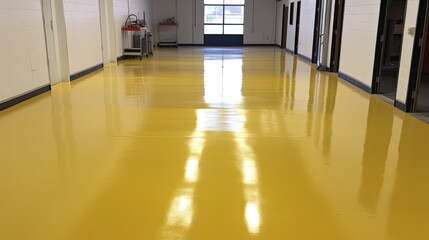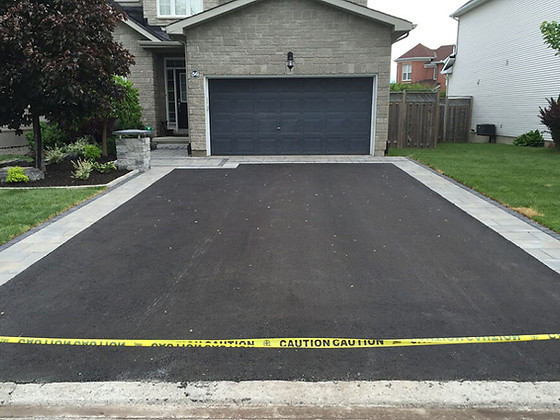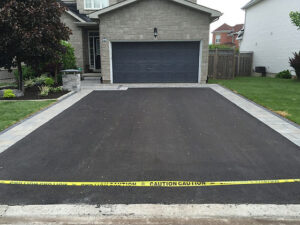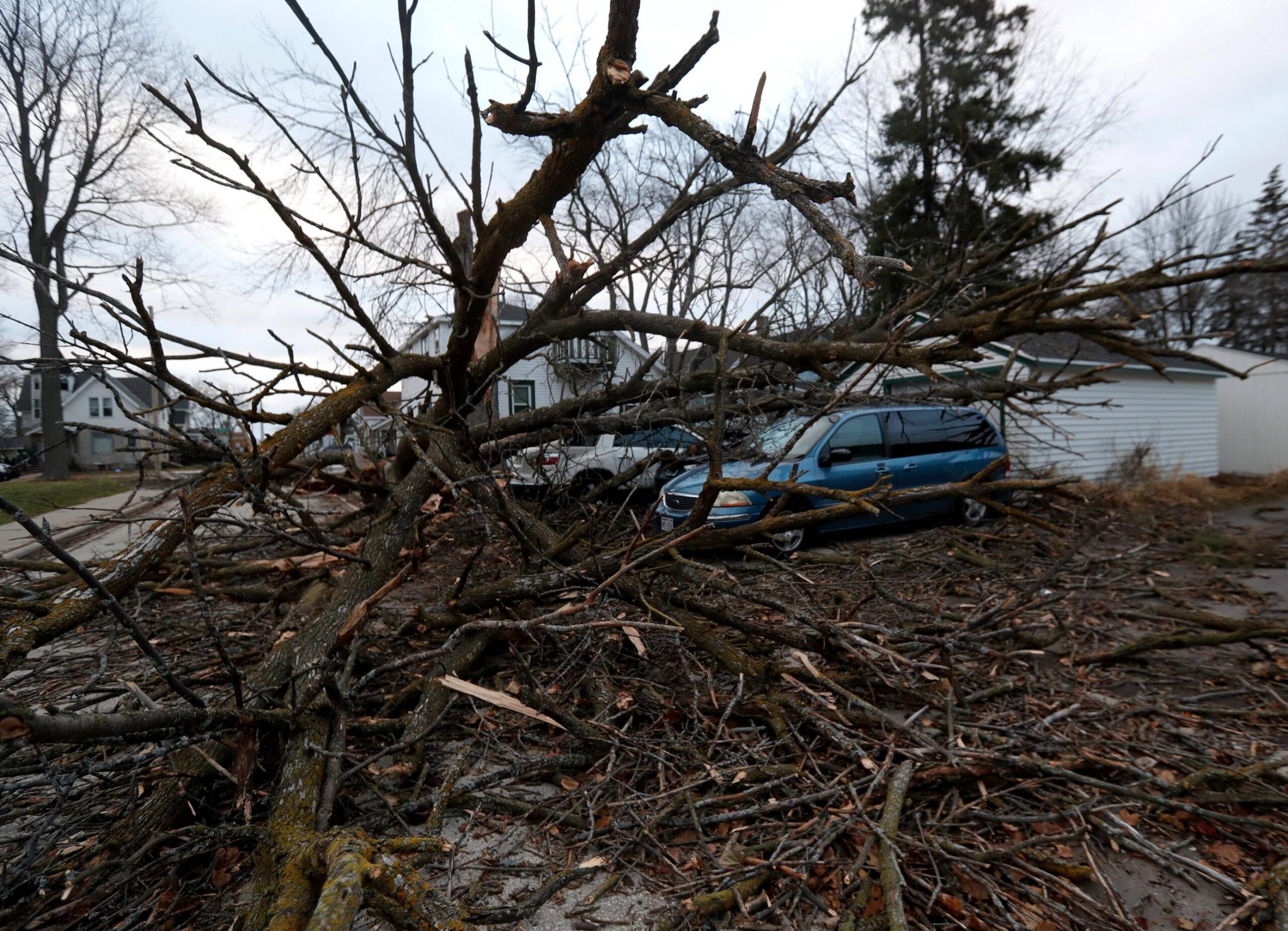Epoxy Flooring Charles Town WV is a hard-wearing colored floor coating often used in commercial and industrial facilities. It can be customized with a wide variety of colors and patterns. It is also slip-resistant.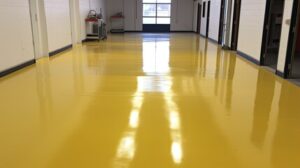
The longevity of an epoxy floor depends on its environment. Residential floors subjected to heavy traffic and frequent moisture will require a thicker epoxy coating.
A high-gloss finish on your epoxy flooring can make it easier to clean stains, fingerprints, and other marks from the floor. It is also a great choice for areas that are highly trafficked. This type of finish is also very durable and won’t chip or scratch easily. It is a good choice for bathrooms, kitchens, and mudrooms. It is also easy to sanitize and resists water and abrasions.
When it comes to selecting an epoxy floor coating, it’s important to understand the difference between solid and water-based or solvent-based options. The best option is a 100% solid epoxy coating, which has no water or solvent and cures to a durable surface. It is also resistant to impact, abrasions and chemicals. This product is available in a variety of color options, and it can be used in a wide range of applications.
Epoxy floor coatings are extremely resilient and can withstand heavy loads of foot, truck and forklift traffic. They can also withstand the pressure of tools and equipment that may be dropped onto the floor. They are also resistant to most chemical spills and cleaners, making them a great choice for garages and auto shops. They are also easy to sanitize and can be cleaned up quickly after a spill or accident.
Aside from the durability and resilience of epoxy floors, they are very aesthetically pleasing and can be customized to your specific requirements. They can be made to look like a traditional tile, marble or concrete floor. They are also available in a variety of colors and finishes to suit your style and decor. They are a good choice for commercial and residential use, and they can increase the value of your property.
A professional contractor will be able to help you choose the right epoxy for your floor. They will provide you with a free estimate and consultation and ensure that the job is done properly. They will use the highest quality materials and offer a guarantee on their work. This will ensure that your floor will last for years to come.
Durability
Epoxy is one of the toughest and longest-lasting solutions for flooring in homes, businesses, and industrial settings. It can withstand heavy traffic and impacts without causing significant damage. Epoxy floors are also easy to maintain and can be resurfaced when they begin to show signs of wear.
There are several factors that can affect the longevity of epoxy floors, including the amount and type of traffic they receive. Heavy traffic will cause the floor to wear down more quickly than light traffic. In addition, the type of chemicals the floor comes in contact with will also impact its lifespan. For example, a chemical that is extremely aggressive to other types of flooring may degrade the epoxy.
A professional installation is also essential to the durability of an epoxy floor. A good epoxy specialist will ensure the product is mixed and applied properly, allowing it to dry thoroughly and avoid cracks and chips. They should also be able to advise on the appropriate top coats and add-ins for your specific facility. For example, some epoxy products are designed to create a slip-resistant surface, which is particularly useful in commercial and industrial environments.
Another way to extend the durability of your epoxy floor is to place rubber mats or protective pads in high-traffic areas. This will help to distribute weight evenly and prevent excessive stress on the floor. It is also a good idea to use caster wheels for any heavy machinery or furniture to prevent scratching or dents in the floor.
Epoxy floors are also resistant to abrasion, which means they can withstand impacts and drops without being damaged. This makes them an ideal choice for industrial environments where machinery and vehicles are often dropped or rolled over the floor. However, it is still a good idea to cover the floor with a carpet or mat in any area where people will walk.
In addition to protecting the floor, these mats will also reduce the amount of dirt and dust that accumulates on the flooring. This will extend its lifespan and improve its overall appearance. It is also a good idea to sweep the floors daily with a soft-bristle broom or mop to remove any debris and keep it looking clean. If the floor is particularly dirty, you can use a mild detergent for wet cleaning.
Easy upkeep
When properly cared for, epoxy floors can last a lifetime and still look great. They are extremely water-resistant, and any spills or tracked-in messes should be cleaned up promptly to prevent staining. This type of floor is also highly resistant to chemicals, which makes it easy to sanitize. The best way to maintain an epoxy floor is to sweep the surface daily and use a non-enzymatic cleaner with hot water to mop it. This will ensure the epoxy is kept clean and free of dirt, grit, grime, and other debris.
If you have a high-traffic area, like a commercial warehouse, it’s best to keep an industrial broom and dust mop handy for any dust or loose debris that may be trapped in the cracks between the epoxy floor panels. It’s also a good idea to put down mats at each workstation or entry door to catch any debris that might fall from heavy equipment and vehicles.
Regular cleaning should include a daily sweep and weekly deep cleaning using a mop and a non-enzymatic cleaner with water or a degreaser. A good option is a non-toxic, biodegradable cleanser or a neutral ammonia solution (8:1 ratio with water). Avoid citrus or vinegar-based cleaners, as these can break down the epoxy coating and dull the shine of the floor.
Epoxy is very resilient, so it can withstand most automotive-related chemicals and spills. It’s a great choice for garage floors or any environment where automobiles are used. Just be sure to wipe up any antifreeze, oil, gasoline, or other car-related chemicals with shop towels or paper towels and dispose of them appropriately. Paint, household cleaners, and abrasive liquids should also be wiped up immediately with the same materials.
It’s important to avoid dragging heavy machinery or pallets across the floor, as this can cause gouges and deep scratches in the epoxy. It’s also a good idea not to drop items on the floor, as this can leave dents in the epoxy that can eventually penetrate through to the concrete.
Easy installation
There are many benefits to installing epoxy flooring in your home or business. This durable and attractive floor coating is long-lasting, easy to clean and provides a high level of safety. It also adds value to your property and can be customized with a variety of colors, patterns, and shapes. Additionally, this type of floor is moisture and stain resistant.
Before applying the epoxy, it is important to prepare the surface. Start by sweeping and vacuuming the entire area to remove dust, dirt and debris. Then, use a degreaser to remove oil and grease stains. Once the floor is clean, you should use a primer coat to make sure that the epoxy adheres properly. Once the primer is dry, you can apply a second coat of 100% solids epoxy. After the second coat is cured, you can add quartz aggregate or decorative paint flakes to create a beautiful and personalized finish. Finally, you should choose a clear topcoat to protect your new floor from damage.
Epoxy floor coating is an affordable and long-lasting option for homeowners or commercial space owners. It is easy to install and maintain, making it a great choice for garages and basements. However, you should hire a professional contractor to ensure that the job is done correctly.
Another benefit of epoxy flooring is that it is durable and can withstand heavy loads. It also resists cracking and fading, which saves money in the long run. Moreover, epoxy flooring is ideal for large facilities because it can improve lighting and increase visibility.
Epoxy floors are easy to maintain and can be cleaned with a mop or broom. They are also moisture and stain resistant, which makes them suitable for areas that will be exposed to a lot of traffic. Moreover, they can be sanded down and re-applied to resurface the floor. In addition, they are easy to sanitize and provide a great barrier against chemicals and dirt. They can also be slip-resistant, which is especially beneficial for industrial environments.
